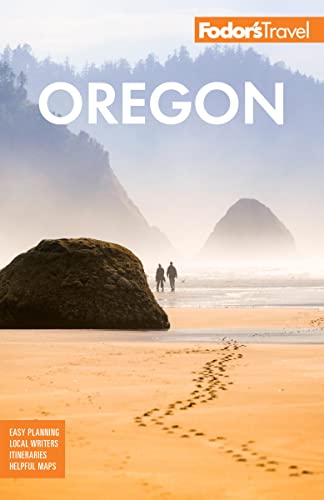Car Travel
Interstate 5 is the major north–south conduit for western Oregon (the most populous part of the state) and provides a straight shot at high speeds from California to Washington—provided there aren't traffic snarls due to slick conditions or summer road construction. Most of Oregon’s largest cities, such as Portland, Salem, Eugene, Medford, and Ashland, are along Interstate 5. This makes driving between the major hubs the most practical way of exploring the state, as bus and train service is limited, and once outside Portland you’ll need a car to get around.
For those who have the time, traveling U.S. 101 is an attraction in itself, as it hugs the Oregon Coast the entire length of the state with its incredibly scenic road. Make sure you want to commit to the coastal drive, which may be slow going in some parts, before getting on U.S. 101, because jumping back and forth to Interstate 5 adds a great deal of time to your trip.
The Cascade Range cuts through the middle of Oregon, which means that east–west journeys often wind through mountain passes, and can be either simply breathtaking (summer) or beautiful, slow, and treacherous (winter).
Interstate 84 is northern Oregon's major east–west artery—it enters the majestic Columbia River Gorge near Portland and continues east to Hood River, The Dalles, Pendleton, LaGrande, and Baker City. U.S. 26 provides access to Mt. Hood from Portland and eventually connects with U.S. 97, leading to Bend.
Car Rentals
Unless you only visit Portland, you will need to rent a car for at least part of your trip.
Rates in Portland begin around $30 a day and $150 a week, not including the 17% tax if you rent at the airport (you can avoid this by renting Downtown or elsewhere in metro Portland, where a number of the major agencies have offices). Note that summer rates can be steep (easily as much as $65 per day or $300 per week for a compact); book as far in advance as possible, and if you find a good deal, grab it. All the major agencies are represented here.
In Oregon, you must be 21 to rent a car. Non-U.S. citizens need a reservation voucher, passport, driver's license, and insurance for each driver.
Gasoline
The first thing visitors notice in Oregon is that except in some very rural counties or late at night at some self-service pumps, it is illegal for customers to pump their own gas. Gas stations are plentiful in major metropolitan areas and along major highways such as Interstate 5. Major credit and debit cards are accepted, and stations often stay open late, except in rural areas, where you may drive long stretches without a refueling opportunity.
Parking
Oregon communities offer plenty of on-street parking and pay lots. In certain urban areas, specifically Portland, there are sections of town where street parking is metered and can be hard to find, particularly during festivals and special events. Mass transit in Portland is a plentiful and efficient alternative.
Road Conditions
Winter driving can present challenges; in coastal areas the mild, damp climate contributes to frequently wet roadways. Snowfall generally occurs only once or twice a year on the coast and in the valleys, but when snow does fall, traffic grinds to a halt and roadways become treacherous and stay that way until the snow melts.
Tire chains, studs, or snow tires are essential equipment for winter travel in mountain areas, which receive plenty of snow starting as early as October and running well into the middle of spring. If you're planning to drive into high elevations, be sure to check the weather forecast beforehand. Even the main-highway mountain passes can close because of snow conditions. In winter, state and county highway departments operate snow-advisory telephone lines that give pass conditions.
Roadside Emergencies
Emergency Services
AAA Oregon. 800/222–4357; www.oregon.aaa.com.
Oregon State Police. 503/378–3720; www.oregon.gov/OSP.
Rules of the Road
Oregon drivers tend to be fairly polite and slower going, which can be a bit maddening for those in a hurry. Bicyclists are plentiful in Oregon cities and rural highways; drivers need to be especially alert to avert accidents, including when opening the car door after parking.
Car seats are compulsory for children under four years and 40 pounds; older children are required to sit in booster seats until they are eight years old and 80 pounds.
Oregon is a hands-free state. It is illegal to talk or text on a cell phone while operating a motor vehicle, and doing so will net you a hefty fine. Use a wireless headset device if you need to stay connected.




